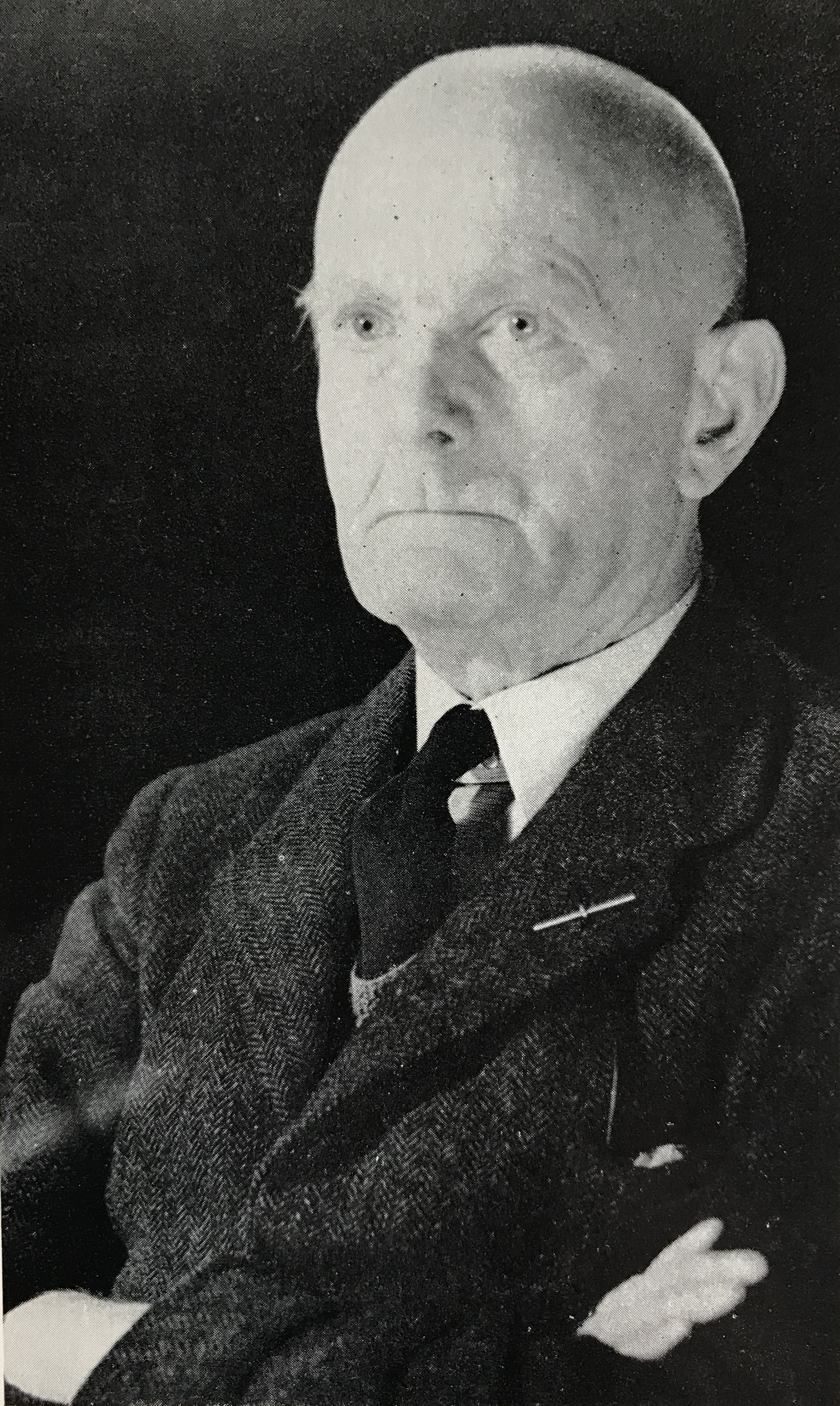Virtual Museum
Famous Clinicians Room
Frederick "Snorker" Barrington
1884 - 1956
Identified Barrington's Nucleus
Frederick James Fitzmaurice Barrington (1884 -1956) was born on 1 of March 1884 in King’s Lynn, Norfolk where his father was a medical officer to the local hospital. Barrington had an all-consuming absorption in the world of science, particularly physiology, and decided to take up a career in medicine since he thought that this would be the easiest way to indulge his passion for biology. He qualified from University College Hospital London (UCLH) in 1907 and held the prestigious Beit Fellowship in 1911.
 His early career was, of course, soon overtaken by the events of the First World War during which he was deployed to serve as Medical Officer on cruisers in the Royal Navy. On his return, Barrington was elected to the UCLH surgical unit where he trained as a urologist and became a visiting genito-urinary surgeon to the St Peter’s Hospital.
His early career was, of course, soon overtaken by the events of the First World War during which he was deployed to serve as Medical Officer on cruisers in the Royal Navy. On his return, Barrington was elected to the UCLH surgical unit where he trained as a urologist and became a visiting genito-urinary surgeon to the St Peter’s Hospital.
He held this position for over thirty years, along with his reputation as a remarkable surgeon to whom his colleagues would turn in the most difficult of cases. His influence within the hospital, and especially amongst his students, was immense, and a largely personal one since he had no time or interest for committees such as the Royal Society of Medicine Urology Section meetings or even conventional discussion.
Bluff and outspoken by nature, it was his students who bestowed him with the nickname of “Snorker”, by which he became well known. A "snork" was the name given to one of his scathing put-downs, presumably preceded by an audible snort – and vividly depicting his stance when an injudicious comment was made without the foundation of sound knowledge. Described as “terse, harsh and even mono-syllabic”, his opinions were almost always born from personal experience with absolute clarity and watertight accuracy, often delivered with unruly use of vocabulary which was “enhanced by his service in the Royal Navy.”
He had thoroughly enjoyed his time at sea and, in particular, the opportunity to watch the sea birds from the deck. His physically tough nature suited the conditions – indeed not even the British weather would persuade him to wear anything more than a thin waterproof, usually found draped over his arm as his familiar, always hatless, figure strode purposefully along the streets of London, frequently in the direction of the Zoological Gardens at Regent’s Park.
Barrington remained, at heart a natural scientist:: botany, zoology, ornithology and geology became passionate hobbies in which he not only indulged but became intimately familiar and expert. He was known as much as a scientist and physiologist as he was a surgeon, and much of his time was occupied with research. During the period of 1914-1941 he published extensively from the laboratories of UCLH.
His original research on the connection of the hind brain to the physiology of micturition remains of central importance in the understanding of neurourology today. Although much of his work did not at first receive the recognition it warranted, it has certainly stood the test of time. His classic and most cited 1925 paper "The effect of the lesions of the hind and mid brain on micturition in the cat" provides a detailed description of the pontine micturition centre, which is just as well known in its eponymous name of Barrington’s nucleus.
During the Second World War, Barrington’s work was once again interrupted as he joined the Emergency Medical Service staff at the relatively rural Colindale Hospital, North London, where he lived alongside other medical staff at “The Woodlands”. He set up a relatively large urology service to provide continuity of care to his patients from UCLH and St Peter’s Hospitals and, in doing so, his usual surgical activity remained constant.
As a long-standing member of the British Ornithologists' Club - and its Vice President between 1943-1945 - a lifestyle in the countryside suited Barrington. It was whilst he was at Colindale that he made detailed notes on his observations of the local birds and wildflowers.
Read more about the British Ornithologists' Club online
Actor James Robertson Justice also started his life as a scientist and, as a fellow ornithologist, became close friends with Barrington. This friendship offered Justice an insider’s view as to the working relationships within the hospital and operating theatre team. He observed, first-hand, Barrington’s nervous habit of using the most terrible, explosive, and expletive language all the time he was operating – something that the team had grown quite attuned to! Of course, these notable characteristics were impersonated on screen by Justice to create the irascible, short-tempered, and demanding chief surgeon, Sir Lancelot Spratt, synonymous with the Doctor in the House films.
Read more about "Doctor In The House" on IMDb online
Though his comments and remarks were pithy and to the point, Barrington was also described as shy, gentle and with an essential kindness. And much like the character of “Spratt”, who also turns out to be more soft-centred and caring than his angry manner initially suggests, Barrington was beloved by his friends, students, and patients - winning their complete confidence, despite his unorthodox bedside manner.
It was said he was happiest enjoying fine food in the company of intimate friends, and he was a generous host. He died suddenly, choking on a piece of steak whilst dining with friends at the Athenaeum on 23 March 1956.
← Back to Famous Clinicians Room